Backyard Sound Observations Inspired by Mr. Brown Can Moo! Can You?
Head outside and see what you can hear. We’re making backyard sound observations inspired by Mr. Brown Can Moo! Can You? This classic Dr. Seuss book is perfect for exploring sounds and working on listening skills. It’s a great choice for Read Across America Day and celebrating Dr. Seuss’s birthday. I get commissions for purchases made through the affiliate links in this post.
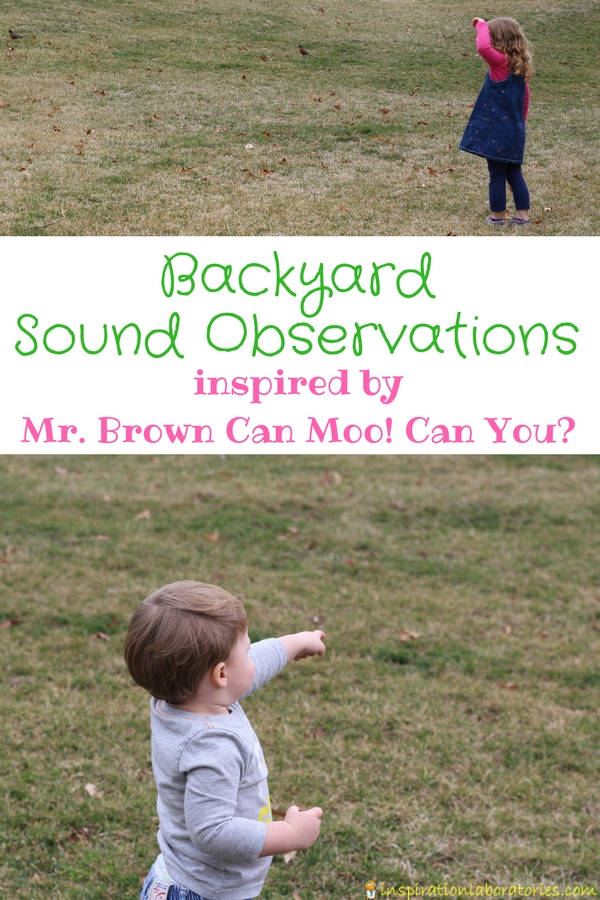
Backyard Sound Observations Inspired by Mr. Brown Can Moo! Can You?
My oldest son, Aiden, and I did a similar activity 6 years ago when he was 2. After reading Mr. Brown Can Moo! Can You?, we made a list of sounds we could hear outside. Then, we went for a walk around the neighborhood and searched for those sounds.
All three of my kids have loved reading Mr. Brown Can Moo! Can You? – it is full of onomatopoeia, or sound words. They love repeating after the sounds and just generally being silly. After The Lorax, this book is probably my favorite Dr. Seuss book. It’s one that kids can connect with and it shows them how to add interesting sound words to their stories.
In today’s activity, I took Lily (almost 4) and Elon (almost 2) outside. We worked on making backyard sound observations. We weren’t looking for any specific sounds, just listening to everything we could.
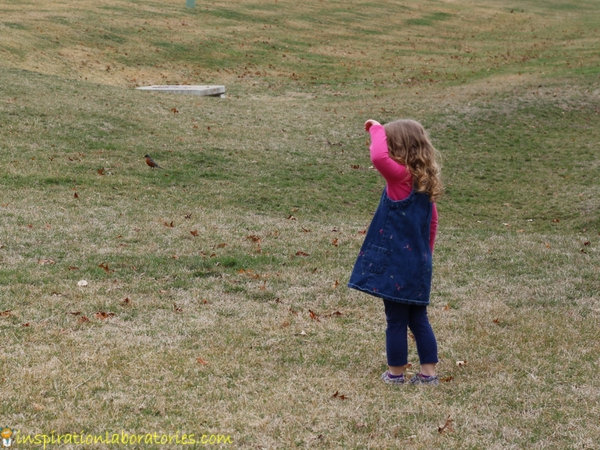
We talked about the sounds we heard. In the photo above, Lily is looking at the robins waiting for them to sing.
We pointed to the sounds we heard. (Or at least in the direction they were coming from.)
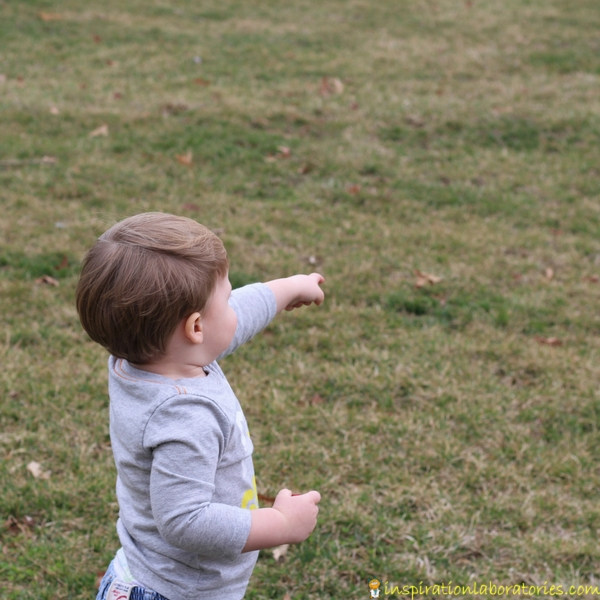
Elon pointed to the robins on the ground and the ones in the trees. In addition to robins, we heard cardinals nearby.

We named the sounds. We heard birds singing, a dog barking, cars driving by, wind chimes, and leaves rustling in the wind. Lily decided it would be fun to use a stick to point to the things she heard. You can see how windy it was as her curls are being pushed backed. We could hear the wind, too.
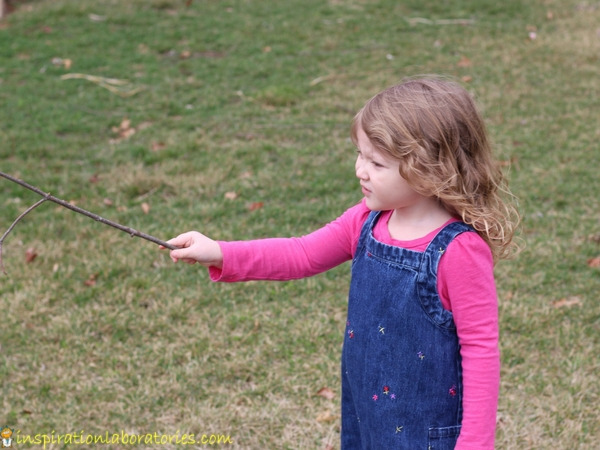
This is such a simple activity that works on an important science skill. Making observations is a part of any science experiment. You have to be able to collect and record data. To do this, we use our senses. Practicing observation skills like listening to sounds is perfect for young scientists – toddlers and preschooler have so much fun with it!
Storybook Science
This post is part of the Storybook Science series. This week is all about Sensory Science. Follow along with the rest of our Storybook Science here. Bloggers will be sharing a new science idea inspired by a children’s book throughout the month of March.
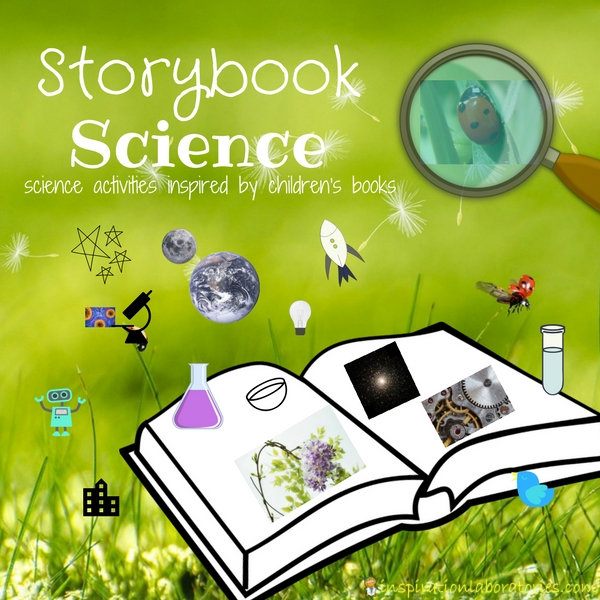 Check out this post, for more Dr. Seuss inspired science activities.
Check out this post, for more Dr. Seuss inspired science activities.


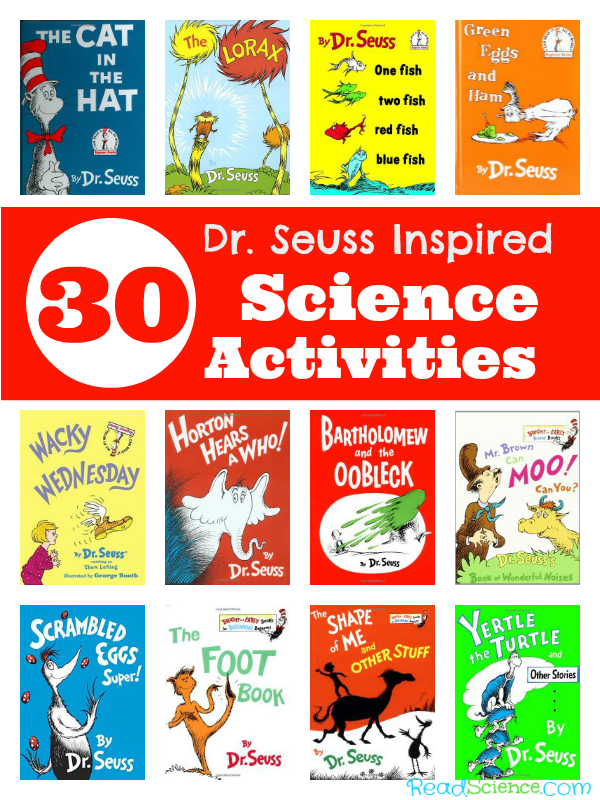
Leave a Reply